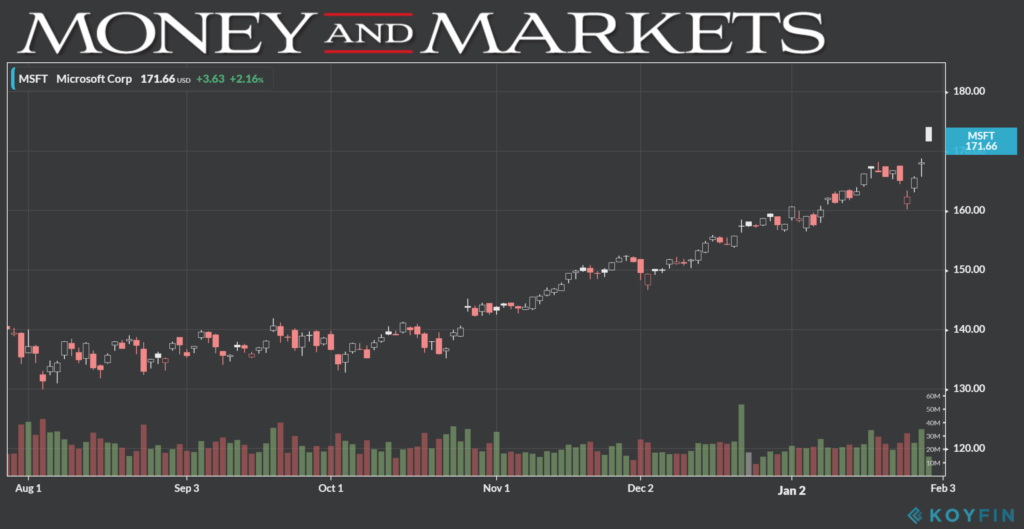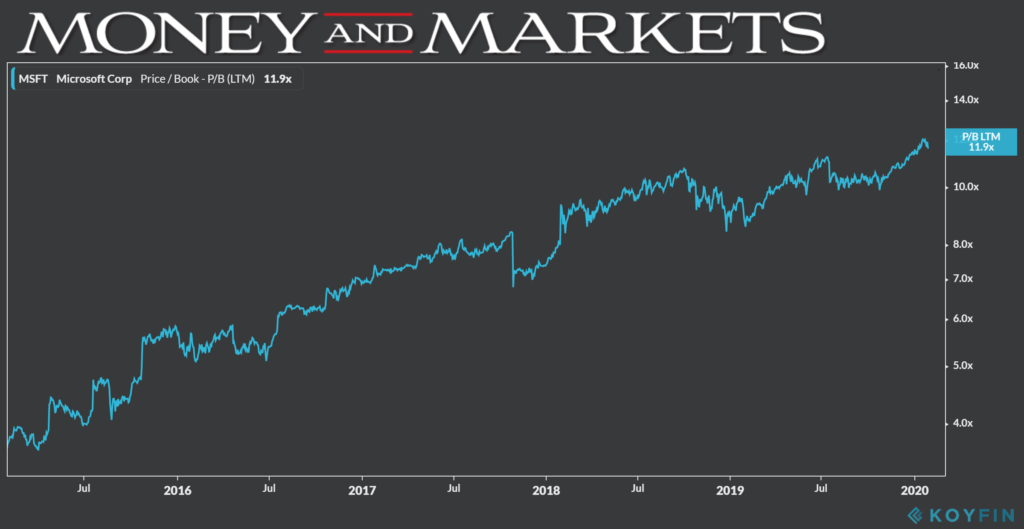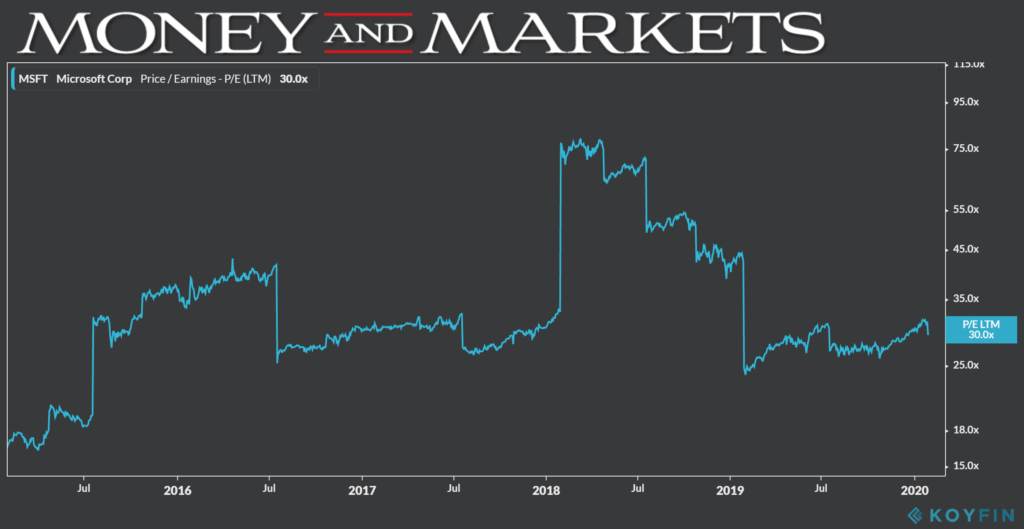Shares of Microsoft Corp. experienced another nice bump after the company reported increases in both revenue and earnings per share.
Microsoft Corp. (Nasdaq: MSFT) said it earned $36.9 billion in revenue during its Q2 2020 report on $11.6 billion in net income. Its earnings per share was $1.51 — an increase over its $1.08 EPS a year ago.
It capitalized on strong reports from previous quarters.
Microsoft’s quarterly report beat analysts’ expectations — $35.7 million in revenue and earnings per share of $1.32.
As a result, Microsoft shares were up a little more than 2% in Thursday morning trading.

While the stock continues to rise, its fundamentals may tell a different story about where Microsoft is headed.
Microsoft Quarterly Report: Stock Is Overvalued
Shares of Microsoft have steadily grown in price over the last year along with its earnings.
But that steady growth doesn’t imply a huge breakout coming for the tech giant.
“MSFT is expected to grow steadily but earnings, in the best case, could be a little more than $8 a share in 2022. This stock might not be as attractive as others based on fundamentals,” Banyan Hill Publishing analyst Michael Carr said.
Those fundamentals suggest Microsoft is an overpriced company, ready for a price decline. Of course, MSFT is up nearly 65% over the past year so it is due for a correction.
One key stat suggesting the company is overpriced is the price-to-earnings ratio. This calculates the price of the stock compared to the earnings the company reports. Microsoft’s P/E in the last 12 months was 30 while its P/E for the next 12 months is 30.7.
Both are extremely high, even for tech companies. The industry median is around 22.4.
Microsoft’s price-to-book — which takes the share price and divides it by the book value of the shares, assets minus liabilities — is 11.9. The industry average is about 3.38. This is a further fundamental value that indicates the company is considerably overvalued.

A third fundamental is price to sales. This ratio takes the market capitalization of a company and divides it by 12 months worth of sales. According to YCharts.com, the price-to-sales ratio for Microsoft has increased to 10.24. The industry average is 2.79.
“MSFT is a mature company with single-digit sales growth. Its sales are growing at an average rate less than the overall market,” Carr said. “This is the kind of stock that should have below-average valuation (a less than P/E ratio) for example. But the market is pricing it as if it was growing at an above-average rate.”
After Microsoft’s Quarterly Report, What’s Next?
Because of the high P/E, P/S and P/B Microsoft currently holds, it is more likely the market corrects it and the price starts to fall.
This isn’t sustainable and in the long run, the stock price will reflect the actual growth potential,” Carr said.

As you can see, anytime Microsoft’s price to earnings goes up, the market eventually makes a drastic correction, bringing the value more realistically in-line with the numbers.
As Microsoft’s price moves up and its earnings continue a slow climb, the share price will drop, reflecting a more honest valuation of the company.




